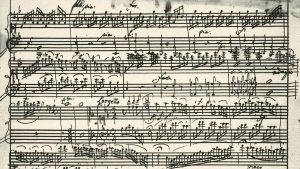In 1995, an American psychologist conducted experiments with rats: half of the subjects were given classical music for two months, the second developed in silence. The first group completed the maze 27% faster and with 37% fewer mistakes than the second group. This proves that the influence of music on living systems is neurobiological and not just emotional. Separate experiments were also carried out with the music of the great Mozart, who said that “it is impossible to believe harmony with algebra.” So, people who were put on Mozart showed a sharp surge in mental activity.

After listening, the same people solved more complex problems than they could before listening, had an increased tone and reacted faster to various subtle stimuli. This practice has been called the “Mozart Effect”. In general, the number of studies that point to classical music as the most useful is extremely large. And how in our time can you teach a child to the right sounds, especially if the family does not listen to classical music, but would like to start? As a result, we can say that any music activities (composing, performing, even just listening) affect the brain, affecting either certain areas of it, or the entire organ. The neural connections that are developed in such a simple and pleasant way can be used by a person in everyday life. These theses are not unfounded, since leading scientists conducted research using modern MRI technologies (the structure of the brain is observed) and EEG (its functions are analyzed). The results of experiments show that music develops the brain: information coming through the senses is processed faster. Every person who wants to get a developed and functional brain should study music, love it, appreciate it and be sure to listen.
MRI Experiments: Circulation and Temporal Lobes

Magnetic resonance imaging is used to measure brain activity. Experiments have shown that when listening to music useful for the brain, normalization of cerebral circulation occurred. Moreover, the brain simulation experiment showed that it is of the same nature as the structure of music: simultaneous and sequential electrical signals produced by the brain, translated into sound, sometimes resembled classical, and sometimes oriental music. Experiments were also made, which gave the following result: most often, when listening to music, the temporal lobes responsible for hearing, as well as emotional centers, were involved. In professional musicians, these zones even look large compared to the average person. Like any living system, the brain is fundamentally cyclical, cycles are about 20-30 seconds long. Scientists analyzed the music of 65 different composers to identify such waves, and found that they are most often found in the music of Mozart, followed by Scarlatti, Vivaldi. In the music of modern pop artists, they are the least common.
